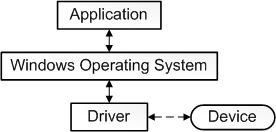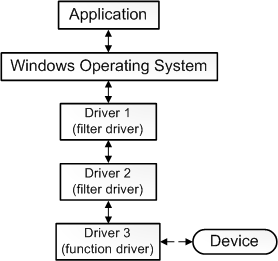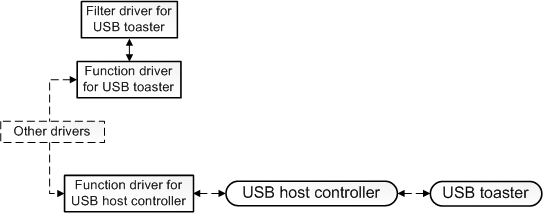DistroWatch.com – Search Distributions – Country of origin : CHINA
[ 受欢迎程度排名 截止至 2013-04-18 ]
The following distributions match your criteria (sorted by popularity):
1. Linux Deepin (受欢迎程度排名: 76)

Linux Deepin

Linux Deepin(最初叫做Hiweed GNU/Linux)是一份易于使用的基于Ubuntu的中文发行。其特性包括预配置好的中文应用软件及工具,例如中文输入法、LibreOffice办公套件、汉英和英汉字典、以及中文TrueType字体。它还供应一份高度定制的GNOME 3桌面和大量可用性方面的增强。
Linux Deepin (formerly Hiweed GNU/Linux) is an easy-to-use Chinese distribution based on Ubuntu. Its features include pre-configured Chinese applications and tools, such as Chinese input method, the LibreOffice office suite, Chinese-English and English-Chinese dictionaries, and Chinese TrueType fonts. It also delivers a highly customised GNOME 3 desktop and a large number of usability enhancements.
2. UbuntuKylin (受欢迎程度排名: 159)
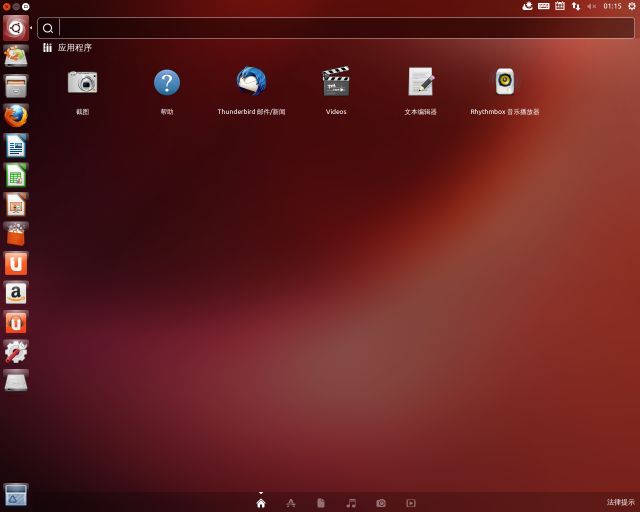
UbuntuKylin

UbuntuKylin是Ubuntu正式的子项目,其宗旨是创建一份Ubuntu的变体,以更适合使用简体中文写作系统的华人用户。该项目提供精巧的、考虑周到的、完全定制的、开箱即用的中文用户体验,而这靠一份进行了简体中文本地化的桌面用户环境及广大中文用户喜爱的软件来提供。 UbuntuKylin is an official Ubuntu subproject whose goal is to create a variant of Ubuntu that is more suitable for Chinese users using the Simplified Chinese writing system. The project provides a delicate, thoughtful and fully customised Chinese user experience out-of-the-box by providing a desktop user interface localised into Simplified Chinese and with software generally preferred by many Chinese users.
3. StartOS (受欢迎程度排名: 182)
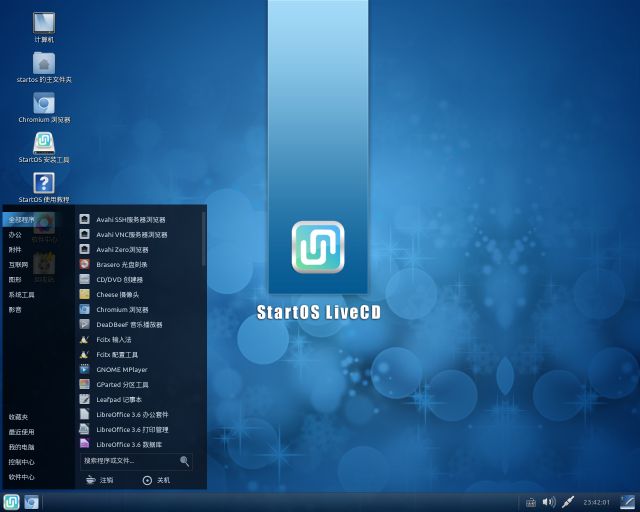
StartOS

起点操作系统是一份独立的中文Linux发行,它采用了改造的GNOME桌面从而看起来很像Microsoft Windows XP。起先它基于Ubuntu,但从4.0版本开始它采用了自己的包管理工具(称为YPK)和安装程序,尽管其低层的自启动运行媒质依然是使用Ubuntu的Casper工具创建。
StartOS is an independent Chinese Linux distribution with the GNOME desktop tweaked to resemble Microsoft Windows XP. In the beginning it was based on Ubuntu, but starting from version 4.0 it adopted custom package management (called YPK) and system installer, though the underlying live medium is still built using Ubuntu’s Casper tool.
4. CDlinux (受欢迎程度排名: 215)
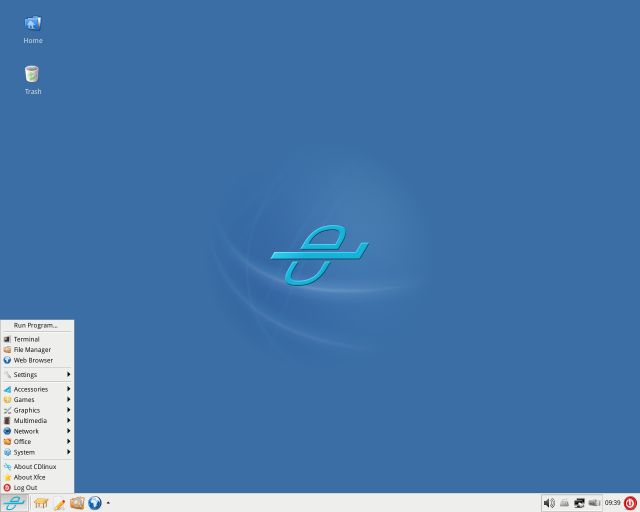
CDlinux

CDlinux是一份紧凑的Linux迷你发行。它包含了最新的Linux内核、X.Org、Xfce窗口管理器,以及很多流行应用程序。它的国际化/本地化程度很好,并且用户可配置性很高。 CDlinux is a compact Linux mini-distribution. It ships with an up-to-date version of the Linux kernel, X.Org, Xfce window manager, and many popular applications. It has good internationalisation and locale support, and is highly user-configurable.
5. Red Flag Linux (受欢迎程度排名: 247)
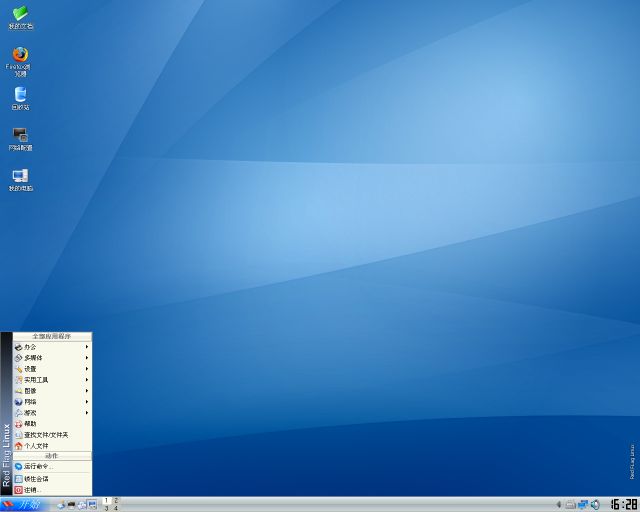
Red Flag Linux

红旗软件有限公司(简称红旗软件)由中国科学院软件研究所和上海联创投资管理有限公司共同组建。我们专注于基于Linux的操作系统的开发和市场,以及面向不断增长的中文技术用户的多平台应用软件。我们的目标是“为网络生活注入活力”。公司将持续发展我们称之为“红旗方式”的一套现代管理模式。这是客户驱动的用户化,它以我们进行自由软件开发的企业模式为基础。
Red Flag Software Co., Ltd. (Red Flag Software) was founded by Software Research Institute of the Chinese Academy of Sciences and NewMargin Venture Capital. We are focused on the development and marketing of Linux-based operating systems and application software on multiple platforms for the constantly growing base of Chinese technology users. Our goal is “Creating Incentives for Networking Life.” The company will continue to develop a modern management pattern we call the “Red Flag Way.” This is client driven customization based on our business model involving free software.
6. Qomo Linux (受欢迎程度排名: 292)
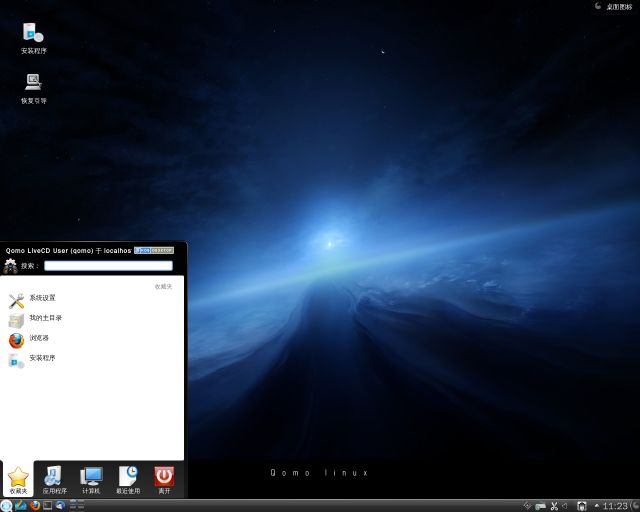
Qomo Linux

Qomo Linux是一份由Red Flag Linux开发的中文发行,它按社区项目来进行管理(其模式类似于Red Hat的Fedora, 或Novell的openSUSE)。其主要特色在于用户友好的桌面,极好的硬件检测,对简体中文的完整支持,以及为期六个月的发布周期。
Qomo Linux (formerly Everest Linux) is a Chinese distribution developed by Red Flag Linux and managed as a community project (in a fashion similar to Red Hat’s Fedora or Novell’s openSUSE). Its main features are user-friendly desktop, excellent hardware detection, full support for simplified Chinese, and a 6-month release cycle.
7. Asianux (受欢迎程度排名: 317)
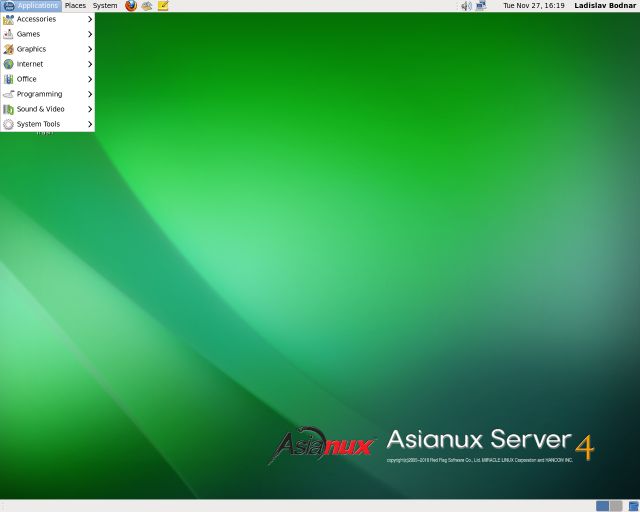
Asianux

Asianux是一份由中国Linux供应商领头羊红旗软件公司和日本Linux供应商Miracle Linux公司联合开发的Linux服务器操作系统,其应用目标则是面向亚洲企业系统的通用性Linux平台。它为企业级客户提供了高可靠性、扩展性、易管理性及更好的软硬件兼容性。Asianux认证伙伴活动则邀请更多的软硬件产品加入到Asianux的认证中来,这无疑将有助于节省开发和认证所需的资源,并为Linux带来高质量和低成本。红旗软件和miracle将发布Asianux,Asianux在中国和日本市场上销售时,每一个Linux发行软件包都不作任何修改。新产品将基于Asianux,每一个都将与各国的本地化特性结合。
Asianux is a Linux server operating system which is co-developed by Chinese Leading Linux vendor Red Flag Software Co., Ltd. and Japanese Linux vendor Miracle Linux Cooperation, aiming at the common-standard enterprise Linux platform for Enterprise systems in Asia. It provides enterprise customers with high reliability, scalability, manageability and better hardware and software compatibility. Asianux certification partner program will invite more hardware and software products to be certified on Asianux, and it will definitely help to reduce developing and certificating resources and provide Linux with high quality and low cost. Red Flag Software and Miracle will distribute and market Asianux without any modifications in each Linux distribution package in China and Japan. New products will be based on Asianux and each will be bundled with localised features in each country.
 CSV
CSV  Plain text
Plain text

